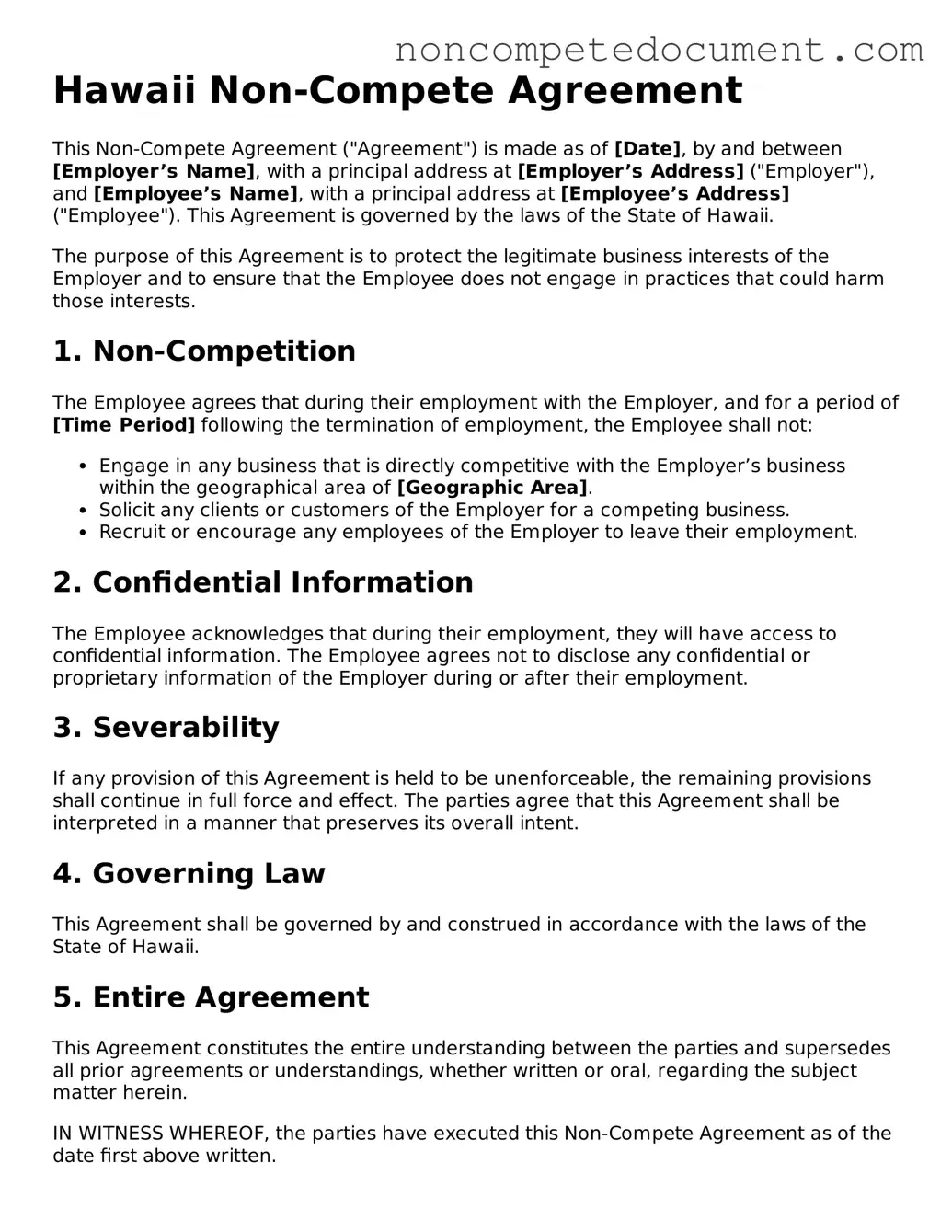When filling out the Hawaii Non-compete Agreement form, many individuals make common mistakes that can jeopardize the effectiveness of the agreement. One frequent error is failing to clearly define the scope of the non-compete. Without a precise description of the activities restricted, the agreement may be deemed unenforceable. It is essential to articulate what constitutes competition in a way that is specific and understandable.
Another mistake is overlooking the duration of the non-compete clause. People often choose a time frame that is either too short or excessively long. A reasonable duration is crucial; it should be long enough to protect the business interests but not so lengthy that it unfairly restricts the individual's ability to work in their field.
Some individuals neglect to consider geographic limitations. A non-compete agreement should specify the areas where the restrictions apply. Failing to do so can lead to ambiguity. If the geographic scope is too broad, it may be challenged in court, rendering the agreement ineffective.
Additionally, many people forget to review the agreement with legal counsel. Not seeking professional advice can lead to misunderstandings about the implications of the agreement. A lawyer can help ensure that the terms are fair and compliant with Hawaii's laws.
Another common oversight is not including consideration. A non-compete agreement must provide something of value to the employee in exchange for agreeing to the restrictions. This could be a job offer, training, or other benefits. Without this element, the agreement may lack enforceability.
Some individuals fail to update the agreement to reflect changes in their employment status or business circumstances. As roles evolve, so should the terms of the non-compete. Regularly revisiting the agreement ensures that it remains relevant and enforceable.
Lastly, a mistake often made is not communicating the terms clearly to the employee. Transparency is key. If the employee does not fully understand the agreement, they may unknowingly breach it. Clear communication fosters trust and ensures that all parties are on the same page.
